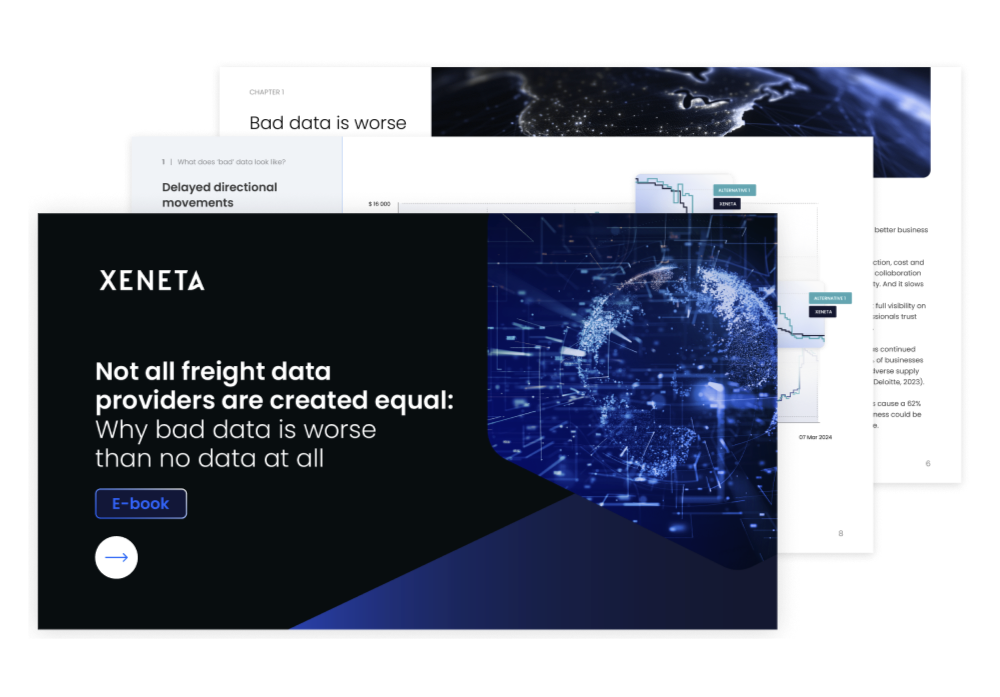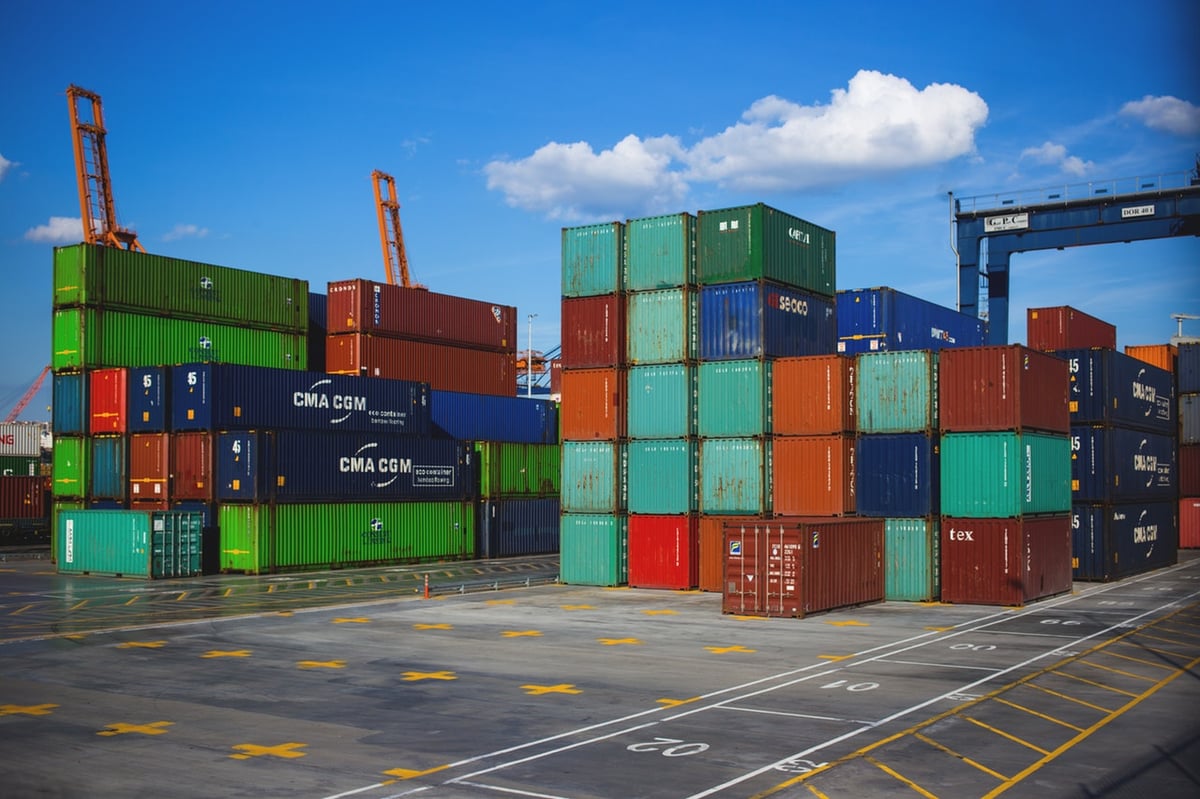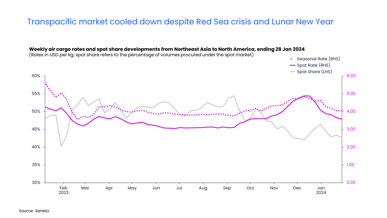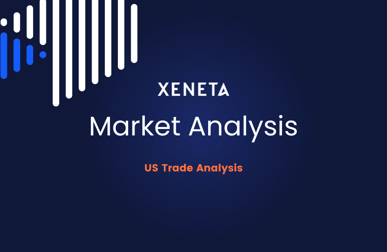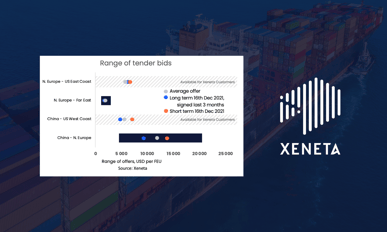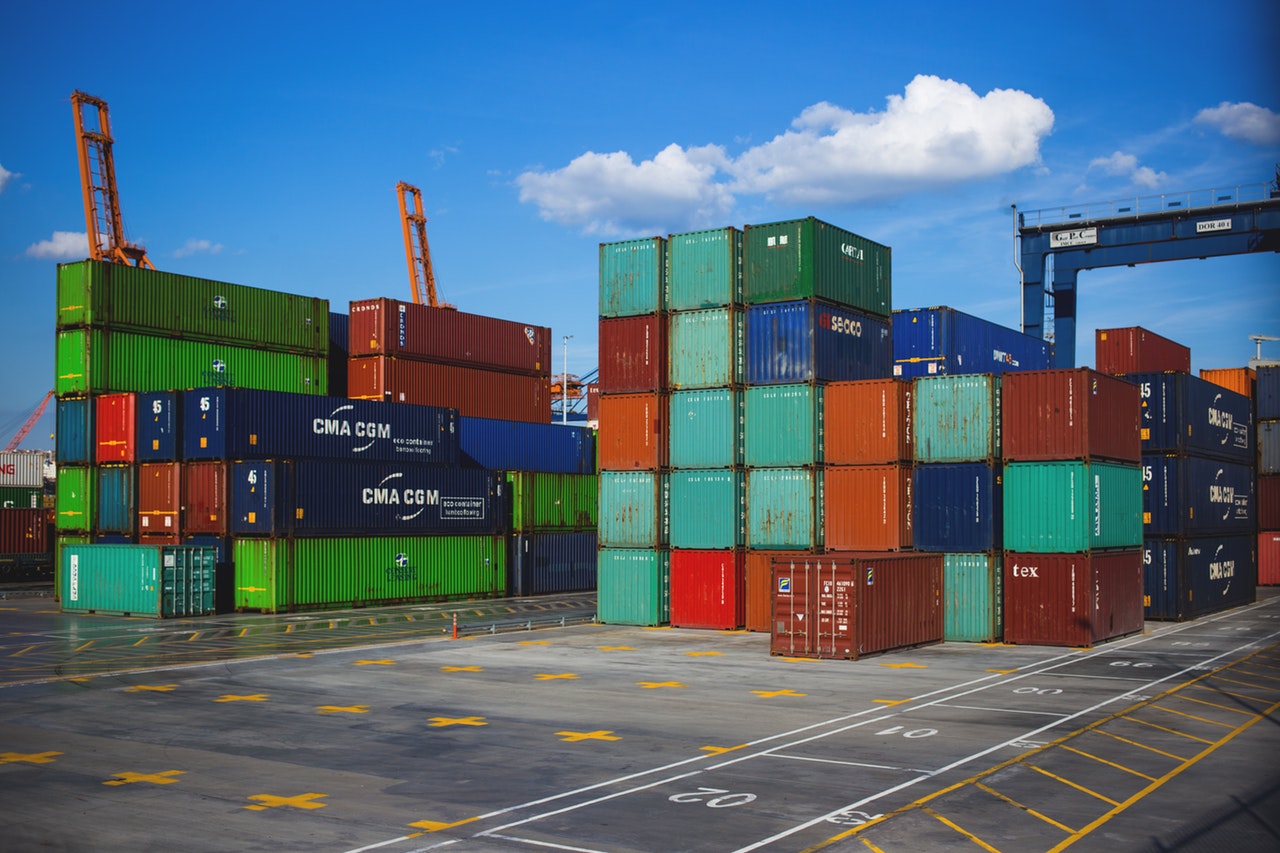
Improving global demand for goods has resulted in a higher demand for global transportation. Inventory re-stocking, improved US economic conditions and Chinese demand for raw materials as well as for such commodities as food and beverage have helped prop up a sinking ocean freight market plagued by overcapacity and unsustainable rates.
Excess capacity still continues within the global ocean freight market. Although rates have stabilized since a year ago, there still remains an ocean freight overcapacity issue. More mega ships are being placed into operation and as a result are compromising the financial stability of container liners. In 2016, the Journal of Commerce cited CEO of Poseidon Containers who noted “When Maersk Line placed its order for the first Triple E ships with capacities of 18,000 TEUs in 2011; everybody had to make the same mistake and follow or abandon the trade.”
Indeed, we conducted a Twitter survey last year asking “How can the container shipping industry eliminate overcapacity? 36% of respondents indicated mergers & acquisitions and another 36% indicated removal of capacity. Meanwhile, 14% said alliance changes and 14% believed the market will simply solve the issue.
Related: How Beneficial Are Ocean Freight Industry Mergers?
M&A
Mergers & acquisitions have eased some ocean freight overcapacity concerns. Hapag-Lloyd acquired CSAV in 2014, CMA-CGM announced its acquisition of NOL in 2015, Hapag-Lloyd and UASC agreed to merge and Maersk acquired Hamburg Sud in 2016 are among some of the acquisitions that have occurred over recent years. Most recently is the proposed merger of Cosco and OOCL which will create the third largest global container line as well as the second largest mover of US containerized goods. Not only have mergers & acquisitions contributed to shifts in capacity but Hanjin’s bankruptcy also.
Rumors of additional bankruptcies as well as acquisitions continue to hover over the industry. But as Jim Newsome, president and CEO of the State Ports Authority notes, shipping line consolidation will ultimately benefit the Port of Charleston. “There will be the same amount of big-ship tonnage but fewer players, and that will make the industry more stable.” In addition, Mr. Newsome further notes that industry consolidation could let ports operate more efficiently and profitably in the long run.
Alliances
Meanwhile, alliances are changing to address the market changes. New alliances came into effect this year and while shippers and ports alike have had to adjust to the changes these new alliances introduced, Peter Tirschwell of the Journal of Commerce commented on Twitter, “M&A will not eliminate overcapacity because ships can always be deployed somewhere else. Intentional capacity removal is the only answer.” In fact, we did see some capacity removal from the market earlier this year as container lines prepared for their respective alliances. But more is evidently needed.
Market Approach
For the remaining folks that believe the market will simply solve the ocean freight overcapacity issue, it hasn’t yet. Perhaps if we wait long enough we will witness more companies exiting the container freight business. Yang Ming, for example, is currently facing tough times. We must wait and see how it all plays out.
Other means of managing overcapacity is the reintroduction of cancellation fees as multiple shipping lines did just recently. CMA-CGM for example announced effective June 1, a booking cancellation fee of $150 per TEU, excluding reefers, will be implemented on its North Europe – Europe – Middle East – India Subcontinental trade lane.
Carriers will often overbook particular ships to account for anticipated ‘no-shows’. In addition, a shipper or forwarder, despite being under contract with a carrier may resell capacity back to the carrier or elsewhere at a higher rate than originally negotiated per contract, thus holding the potential capacity hostage.
H2 2017 Expectations
According to the Journal of Commerce, preparations for an anticipated stronger Asia-Europe peak season are underway. Cargo owners and carriers are already reporting rising orders from Europe and tightening space on vessels. The Journal of Commerce cites the director of trade at OOCL as saying, “With the expectation of a stronger peak season ahead, space will be tighter than usual and shippers will need to plan ahead to protect their supply chain where securing additional space during this period may see higher premiums.”
Accurate forecasts from shippers will be vital to help manage capacity on vessels and equipment needed to position and move containers. Otherwise, cancellation fees will be implemented and available capacity will go unused. Cooperation between shipper, forwarder and carrier is a must to ensure efficient management of containers.
What do you think?
Do you think there still is an ocean freight overcapacity issue? If so, what is the best way to solve it? Let us know what you think by providing your thoughts in the comment section.
